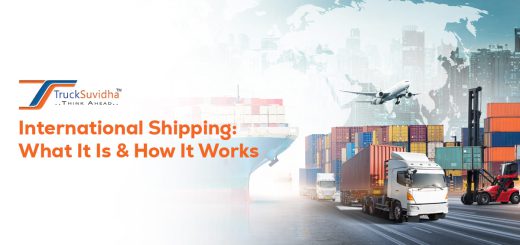What is the Distinction Between Forward and Reverse Logistics?
The first type of logistics is forward logistics, which is the traditional definition. Traditional logistics processes, on the other hand, do not involve the logistics of managing returned goods. These are examples of reverse logistics.
At its most fundamental, forward logistics refers to the movement of goods from the point of manufacture to the end of sale. In other words, it is the movement of raw materials from a manufacturer to a store and, finally, to customers.
Various ways can perform this throughout the supply chain.
Among these are:
- Order fulfillment is directly done
- Services provided by hubs
- Services for pick-and-pack
- Shipping
In forward logistics, each stage adds value to the product as it transits through the supply chain. Customer demand dictates the velocity of flow, requiring the maintenance of inventory at each stage to cope with changing demand.
What exactly is Reverse Logistics?
Reverse logistics, on the other hand, is the process of refurbishing, retrofitting, or otherwise restoring previously used or returned products and reintroducing them into the supply chain for usage by new consumers. It is a significant method for retailers and manufacturers to recoup the value of returned goods.
These are goods that begin with the end-user and then return to a store or manufacturer for disposal or re-use. Among the methods used to accomplish this are:
- Returns
- Recalls
- Repair and restoration
- Repackaging for restocking/reselling
- Recycling
Reverse logistics can assist a business in saving money by lowering the percentage of revenue spent on returns. Furthermore, reverse logistics is gaining popularity due to the notion of its “green” or sustainable nature, as well as the fact that it generates a supplementary ROI from every product in the reverse flow supply chain.
Also Read:- Smart Methods to Find Top-Notch Truck Transport Services in India
What is the Difference Between Forward and Reverse Logistics?
We don’t have enough room here to go into detail about each form of logistics. Every business is unique, and so are its logistics. Indeed, suppose your supply chain management system does not incorporate reverse logistics. In that case, it may be advisable to start with a high-level overview of the ideas before delving into the specifics.
- Forward Logistics manages the transfer of commodities from raw materials to the customer. Value is mainly added to the product at each stage of its journey to the final user.
- The further forward logistics are from raw materials, the more divergent they get. In other words, while raw materials are sometimes only located in a few spots throughout the world, end goods must reach every customer’s home or place of business.
- Customer demand determines the rate of forward logistics, and each stage holds inventory to manage variations in that demand.
- Reverse Logistics refers to the management of the reverse transportation of commodities from the end user to the manufacturer, or even back into raw materials via recycling. Reverse logistics must be convergent, gathering spent products from several places and transferring them back to one or more producing facilities.
- The speed of reverse logistics is solely determined by supply. A high volume of product returns can make them busier and faster, but a low volume of product returns can cause the logistics to halt completely.
- The value of a product undergoing reverse logistics decreases at each stage as expenses grow due to the additional materials handling requirements.
Conclusion
Although some retailers or brands may choose to construct their own returns processing system, utilizing a 3PL partner with cutting-edge software may frequently help lower your costs and let you focus on your forward retail company.




Recent Comments